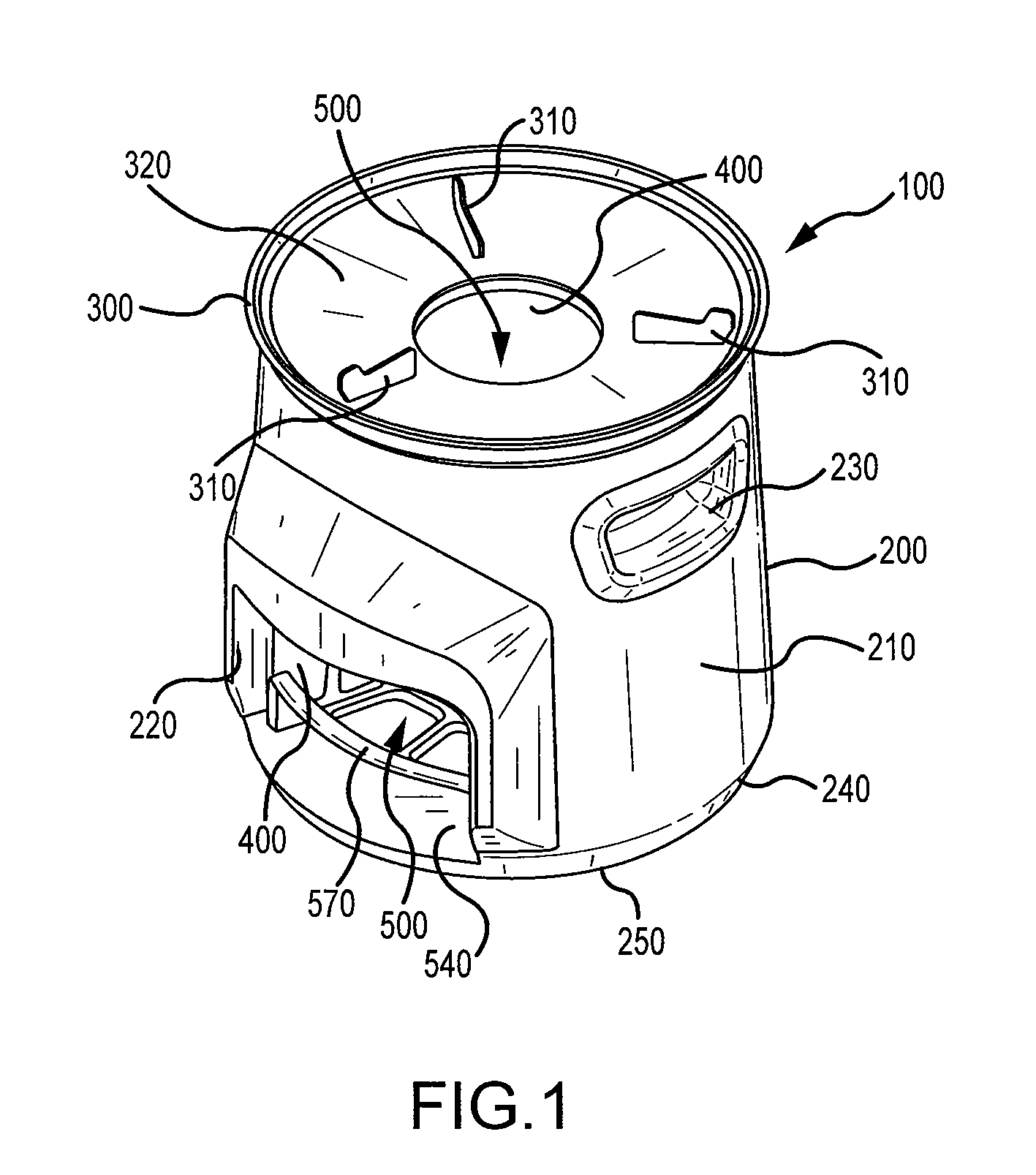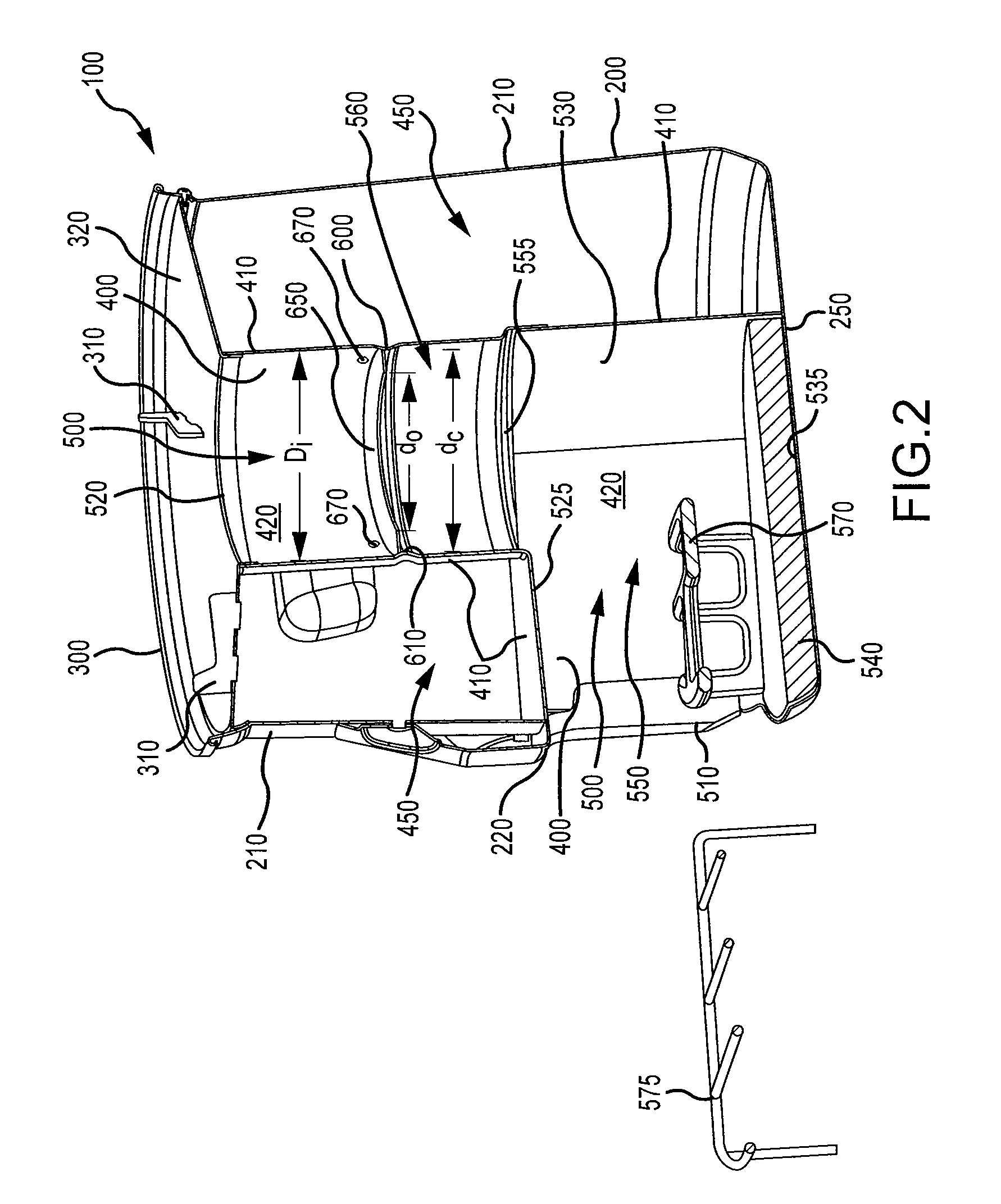Cook stove assembly
a technology for cooking stoves and components, applied in the field of stoves and cooking equipment, can solve the problems of increasing the likelihood that they may be consumed before exiting the combustion chamber, being financially out of reach for those with modest incomes, and reducing so as to prevent death and disease, reduce the production of dangerous gases, and reduce the production of dangerous combustion products
- Summary
- Abstract
- Description
- Claims
- Application Information
AI Technical Summary
Benefits of technology
Problems solved by technology
Method used
Image
Examples
example 1
[0075]Thermal efficiency and particulate matter production was analyzed in cookstoves with and without an orifice ring. In this experiment the amount of time needed to boil water was measured along with the amount of wood used and particulate matter produced for each stove. Results from the tests were used to calculate thermal efficiency for biomass stoves with and without an orifice ring.
[0076]
TABLE 1Table ITimeWoodto BoilThermalCO (g)PM (mg)Use (g)(min)EfficiencyElBv10 (shortened15.4529449.131.540.1elbow 3″ orifice)ElBv11 (shortened20.51518463.134.531.3elbow no orifice)
[0077]Table 1 shows experimental results of stove performance with and without an orifice during a three phase modified water boil test. Wood was used as a bio-mass source. Carbon monoxide (CO) emissions are measured in grams, particulate matter (PM) is measured in milligrams, wood use in grams. The results presented in Table 1 show that the presence of an orifice ring led to decreased CO and PM production from the ...
example 2
[0078]The effect on carbon monoxide (CO) production of stoves with and without an orifice ring was tested using the Testo system. This experiment used a FeCrAl 100 mm standard rocket stove having an elbow. From a cold start, the tests showed that the orifice plate resulted in a 2.51 g of CO produced while the rocket elbow without the orifice plate resulted in production of 8.5 g of CO. CO production was measured by Fourier transform infrared (FITR) spectroscopy.
PUM
| Property | Measurement | Unit |
|---|---|---|
| thickness | aaaaa | aaaaa |
| melting point | aaaaa | aaaaa |
| wall thickness | aaaaa | aaaaa |
Abstract
Description
Claims
Application Information
 Login to View More
Login to View More - R&D
- Intellectual Property
- Life Sciences
- Materials
- Tech Scout
- Unparalleled Data Quality
- Higher Quality Content
- 60% Fewer Hallucinations
Browse by: Latest US Patents, China's latest patents, Technical Efficacy Thesaurus, Application Domain, Technology Topic, Popular Technical Reports.
© 2025 PatSnap. All rights reserved.Legal|Privacy policy|Modern Slavery Act Transparency Statement|Sitemap|About US| Contact US: help@patsnap.com



